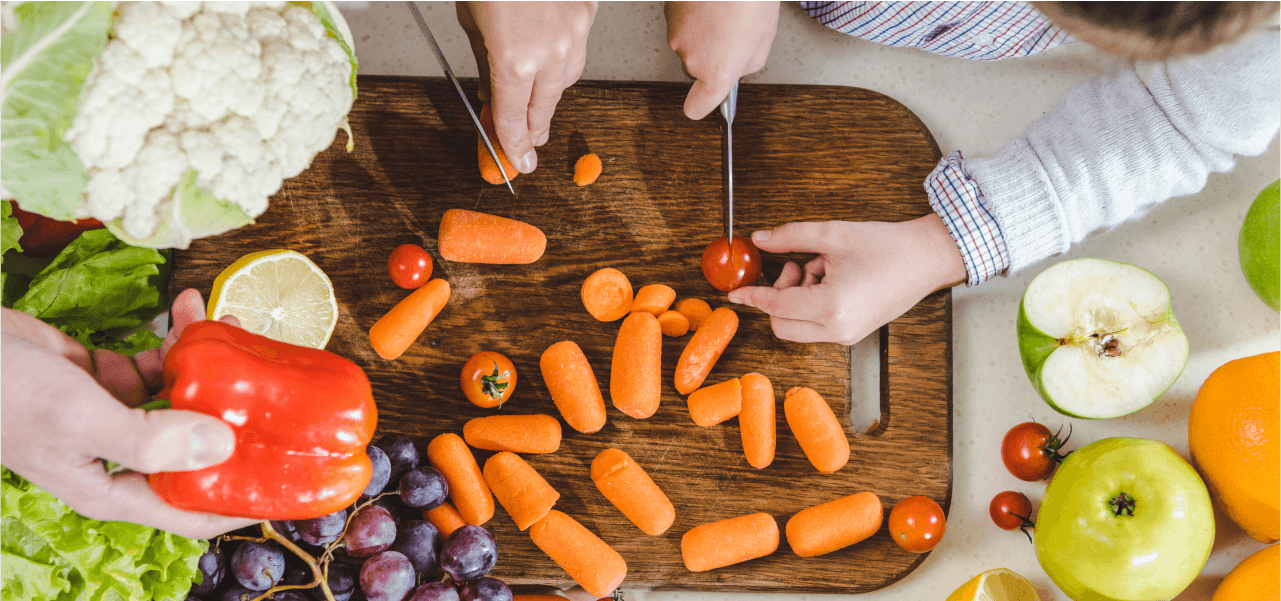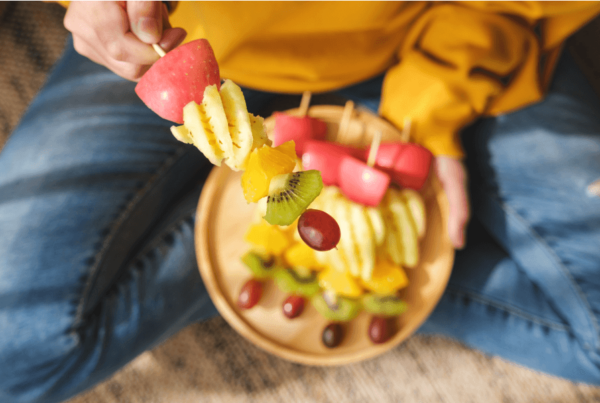Getting your kids to eat their veggies is a task that many parents can relate to all too well. Although it may appear like an uphill battle, there are a number of ways you can encourage your children to try and *more importantly* enjoy eating vegetables.
But first… it is important to remember that we can’t get or make kids eat vegetables.
Pushing kids to eat their veggies often just leads to more mealtime battles and power struggles. Plus, it doesn’t allow children to learn to like vegetables or develop a positive relationship with food. The decision to try new veggies has to come from them.
So, how can you overcome this challenge? Here are 5 effective strategies to help children learn how to eat and love veggies.
1. Continued Exposure
Children can develop a fear of new and unfamiliar foods, this is a natural development stage called, “food neophobia”. They can also have altering taste changes as they grow. Knowing this, one of the key steps in helping kids to eat veggies, is continued exposure.
Continued exposure refers to offering the same vegetables often. This is important, because research shows it can take up to 20 exposures before your child decides to take a single bite. So try not to write a vegetable off or decide to never serve it again when you hear the phrase “I don’t like it!”. In fact, that’s very common for children to say when they first taste them – veggies often have a bitter taste. Instead, you can reply, “that’s okay, you’re still learning” – and then keep offering the veggies at the next mealtime without any pressure.
2. Start Small
Take a second to think of a food you really really dislike…Now imagine a large portion of this food is served on your dinner plate tonight. How would you feel? Uncomfortable? Overwhelmed? Most would be.
This is how many children feel when a new or unfamiliar vegetable is offered to them. These feelings are often heightened when served in large amounts and often lead to flat out refusals and battles at mealtimes.
When you are serving vegetables to kids, no piece of veg is too small. One carrot stick, one cucumber slice, or even one single pea is a great place to start and will help to not make your child feel overwhelmed come dinner time.
3. Get them Involved
There’s countless ways you get your kids involved and interacting with vegetables. Some of my favourite ways include preparing and cooking meals together. This is great as they get to be hands-on with the ingredients going into the meals, plus they will be more interested in trying new foods if they have helped make it.
Grocery shopping is another fantastic opportunity for kids to see, engage, and learn all about different types of vegetables. You could show them how some vegetables are frozen, or how others come in cans. If you have more time, a game of eye spy, with the theme being vegetables, is another fun and interactive way to get kids engaged with new vegetables.
4. Variety is Key
To help foster a love of veggies, try presenting them in a variety of new ways. The more variety there is, the more chance your child will find something they like to eat. Reflect on your own taste preferences, is there a vegetable you prefer roasted over steamed? Raw over mashed?
You could try:
- Dicing up veggies and serving in bolognese sauce or an omelette
- Adding shredded cheese to cauliflower and broccoli
- Mashed carrot and sweet potato
- Serving vegetable kebabs
- Adding zoodles to pasta dishes
- Adding diced capsicum to pizzas
- Offering carrot and cucumber sticks + a dip for snacks
5. Make it fun!
Incorporating play into mealtime is a great way to encourage children to interact and get excited about eating vegetables. A few simple tricks:
- Arranging veggies on the plate to make a funny face (helpful hint: broccoli works great for adding on some curly hair).
- Including lots of colour!
- Trying different utensils and dinnerware
- Take animal bites to try new veggies – you could take a ‘nibble like a mouse’, ‘chomp like a hippo’, or ‘munch like a giraffe’.



